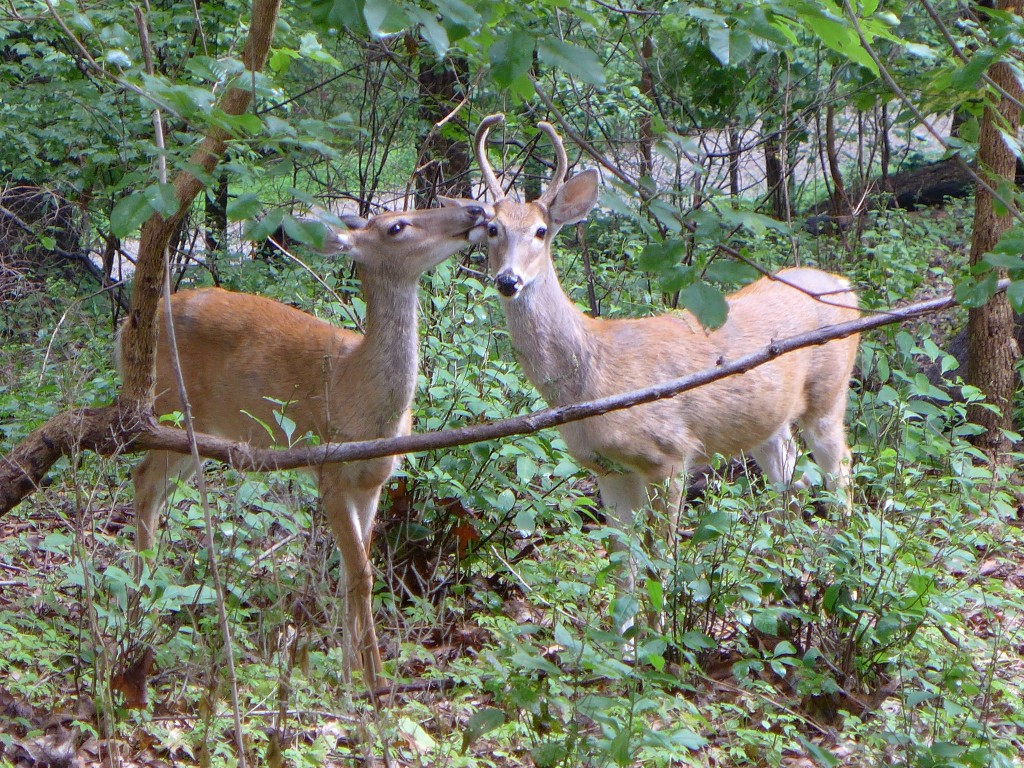
20 March 2023
Black-legged tick season is here again and with it comes the threat of Lyme disease. We now find ticks in neighborhoods where they never used to be and white-tailed deer are the reason why. More abundant deer mean more ticks. More abundant ticks mean more Lyme disease. Though deer themselves don’t spread Lyme disease they have an effect on its abundance. Let’s examine the Deer, Ticks, Lyme connection.
Lyme disease is a debilitating illness caused by a bacteria (Borrelia burgdorferi) that’s transmitted by the bite of a black-legged tick.
Black-legged ticks (Ixodes scapularis and Ixodes pacificus) have a two year life cycle as egg, larva, nymph and adult. At each stage the tick must drink a blood meal to transition to the next one — from larva to nymph, from nymph to adult, and from adult female to produce eggs. (Note: Ticks eggs do not carry the Lyme bacteria.)
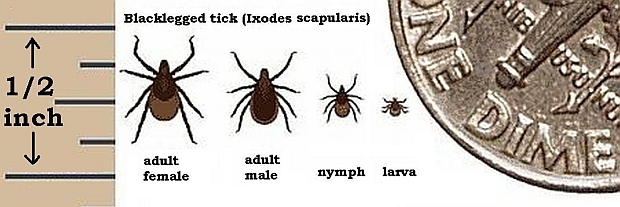
Larval ticks are so tiny that their normal blood hosts are small animals and birds including the white-footed mice, chipmunks, short-tailed shrews and masked shrews that are responsible for infecting 80-90% of ticks. Nymphs and adults are large enough that they can also feed on humans and deer.
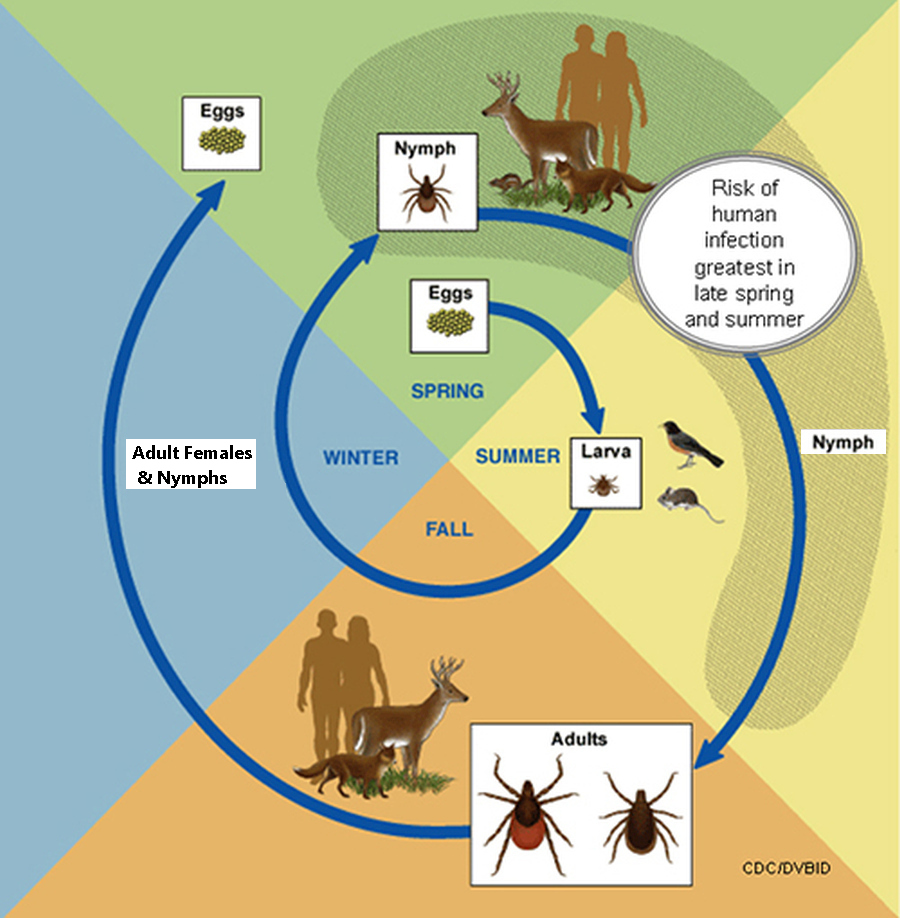
When a tick bites a host and sucks its blood it takes up the host’s blood and transfers some of its own body fluids into the host. If the host is infected with the bacteria, it infects the tick. If the tick is infected, it infects the host.
Deer cannot transmit Lyme to ticks because they’re never infected by it (lucky them!). Deer are not to blame for spreading Lyme. However deer are key to the black-legged ticks’ reproductive success.
Deer are the adult ticks’ preferred host and their long distance transport system. Deer bodies are the place where adult ticks meet and mate in the fall. After mating the male dies but the female lives on. She sips a last blood meal, then drops off to the ground and hides in leaf litter while her body develops eggs over the winter.
Adult ticks meet in the fall during the rut while deer are moving around a lot. Bucks average 3-6 miles per day but may travel as much as 10-20 miles in search of does. Does may travel to meet or evade them.
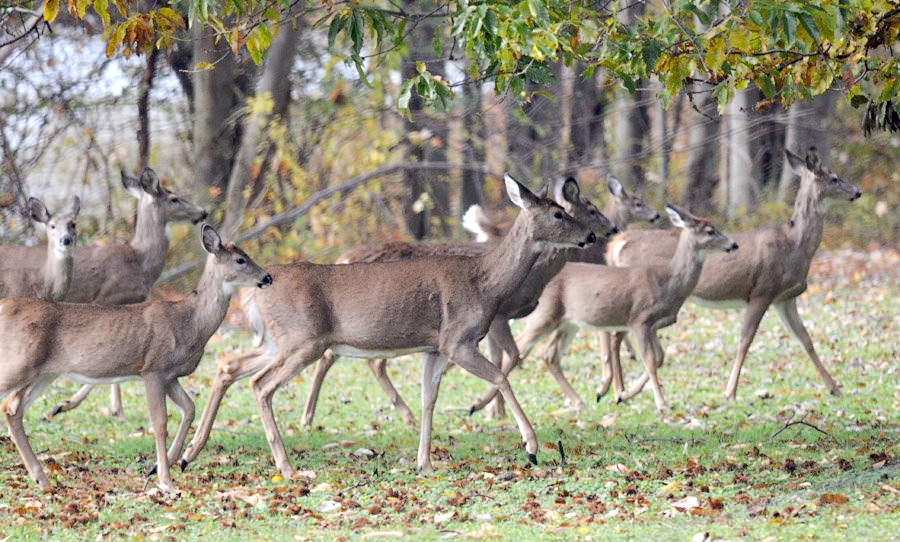
Meanwhile ticks are along for the ride. When a pregnant female tick drops off after her last blood meal she may be 3 to 20 miles from where she started and she’s carrying 1,000 to 3,000 eggs that she’ll lay in the spring.
In places with overabundant deer moving into new areas, as is happening in Pennsylvania, we find an abundance of ticks where they’ve never been seen before. Pennsylvania also has the highest number of Lyme disease cases in the U.S.
Deer are not the reservoir for the Lyme disease bacteria but in places with too many deer there are too many ticks. More ticks mean more Lyme disease.
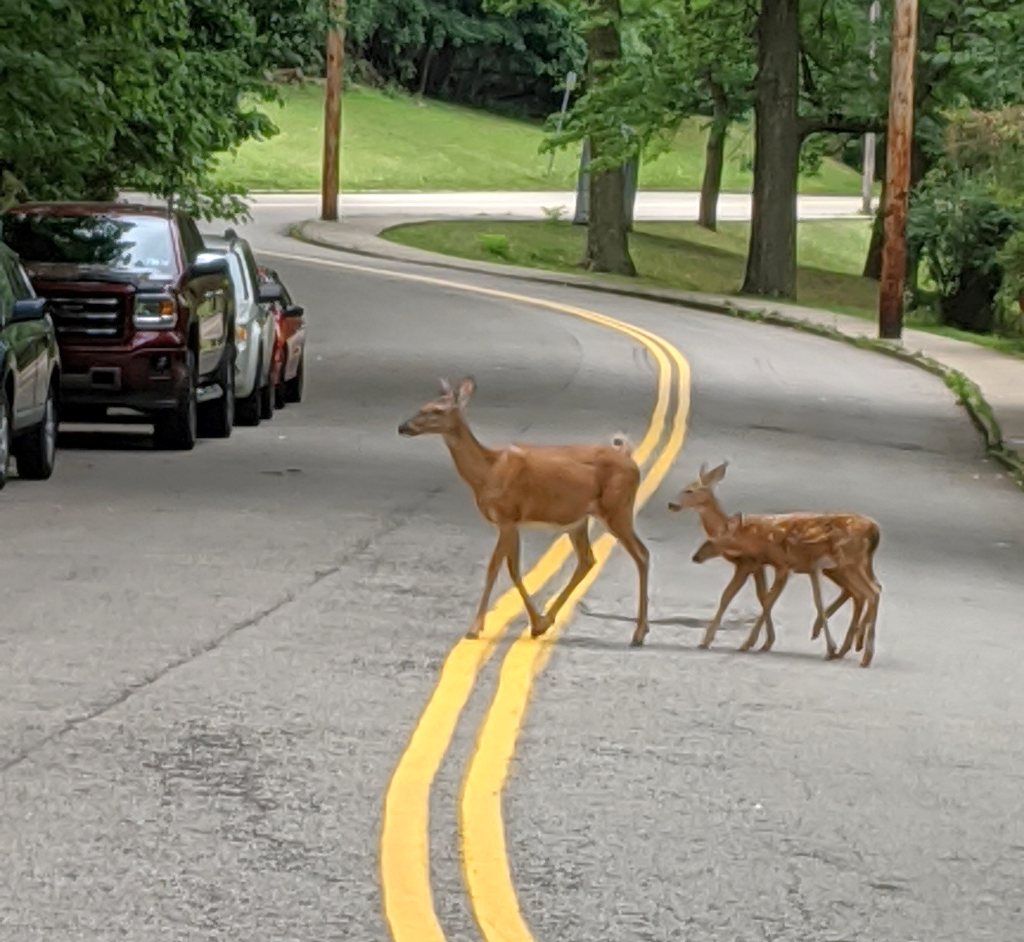
For more information check out these resources:
- Deer tick FAQ at Tickipedia or Black-legged tick information at tickencounter
- White-footed mice are the main reservoir of the Lyme bacteria
- USA Today: Those deer on your lawn? They’re delivering disease-ridden ticks to your doorstep
- Deer Reduction Is a Cornerstone of Integrated Deer Tick Management
- Connecticut: Deer Control for the Prevention of Lyme disease
- The deer-ticks-Lyme question is complicated:
p.s. There’s also a flu-like disease, called babesiosis, that’s carried by black-legged ticks and is now gaining momentum. Uh oh!
Unfortunately, our city government seems unable or unwilling to recognize and mitigate the health and safety issues that deer overpopulation mean for our residential neighborhoods. I think it would be preferable to develop and implement a plan to manage the deer population BEFORE an emergency requires it. A few of the suburban communities have put something in place – Mt Lebanon, for one, and Ross, I believe, for another – and we could learn from the issues they confronted and from their successes and mistakes.
Comments on this blog are moderated. This comment has been edited for tone.
MAYBE EVERYONE SHOULD JUST TAKE PRECAUTIONS AND LET IT REST. DON’T WORRY SO MUCH. THESE THINGS HAVE BEEN AROUND FOREVER AND EVERYONE IS STILL HERE.
THANK YOU FOR LISTENING.
Deer get a lot of the heat for spreading ticks, as they should, however a wide variety of mammals serve as preferred hosts for the black-legged tick and other offending arachnids. Everyone should be wearing a tick repellent nowadays when spending any time outdoors, including while doing seemingly safe or mundane things like mowing the lawn.
Let’s all put up owl boxes. If you dislike ticks, the Owl is a friend, it has quite an appetite for host animals. Not a solution for the deer, just a general positive.
Certainly any path where you have seen white-tailed deer transit is a high risk zone. Be careful!